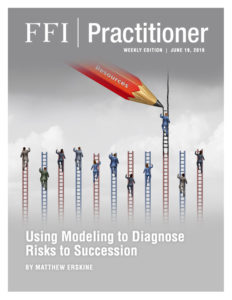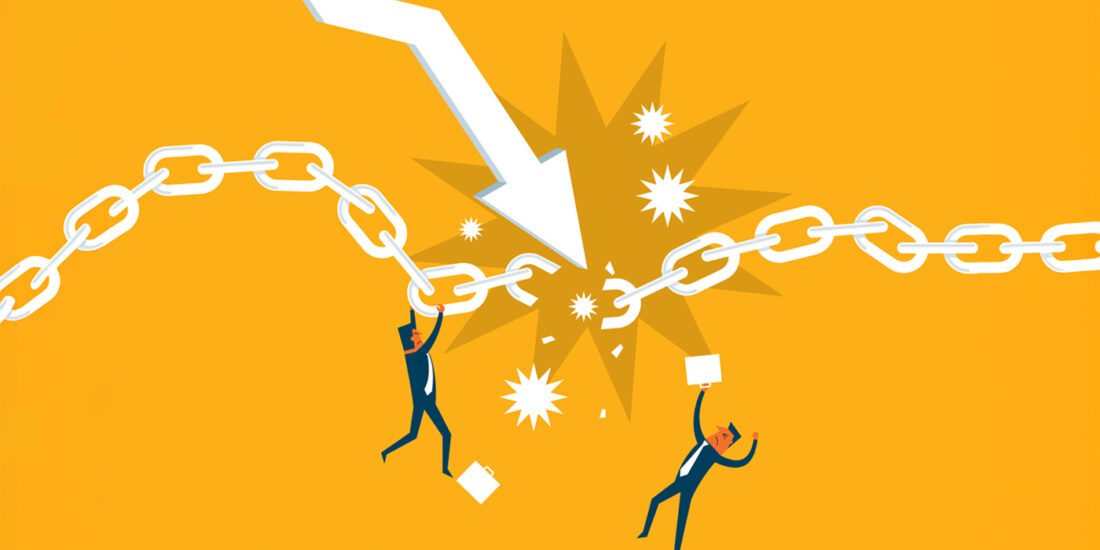
View this edition in our enhanced digital edition format with supporting visual insight and information.
Thank you to this week’s contributor, Matthew Erskine, for providing this thoughtful examination of the “Success to the Successful” model and applying to succession in family enterprises.
Families and businesses are complex organizations, and family-controlled businesses are even more complex than either. By their nature, such complex systems are counterintuitive, and it is difficult to anticipate or analyze these systems with just sheer imagination. In that space where family systems and business systems overlap—for example, when families control a closely held business, realize wealth from the sale of a closely held business, or in a family office—it is necessary to identify existing problems and to anticipate future issues. This is especially true when there are:
- Deeply held family and business assumptions that influence the way that individuals think and act;
- There is a need to define problems, formulate and test solutions, and implement sustainable solutions;
- There is a need to avoid solutions that will spawn more problems in the future;
- The family/business groups need a setting where they can learn together, ask the right questions, and avoid falling victim to the day-to-day pressure to leap to a solution without adequate analysis of the family and business situation; and
- Individual members of both the family and the business you need to motivate with confidence in the potential of successful individual and organizational change.
One useful tool that families and businesses can employ to learn and to anticipate problems is modeling. Modeling is an approach to understanding the behavior of complex systems over time. It deals with internal feedback loops and time delays that affect the behavior of the entire system. What makes using this type of modeling different from other approaches to diagnosing and preventing problems in complex family and business systems or cultures is the use of feedback loops, as well as stock and flows. These elements help describe how even seemingly simple systems display baffling nonlinearity.
In psychology, the term “Archetype” refers to a generic version of a personality. In this sense, a “mother figure” could be considered an archetype and may be identified in various characters with otherwise distinct (non-generic) personalities. The use of archetypes to illuminate personality and literature was advanced by Carl Jung early in the 20th century, who suggested the existence of universal content-less forms that channel experiences and emotions, resulting in recognizable and typical patterns of behavior with certain probable outcomes. Archetypes are cited as important to both ancient mythology and modern narratives.
Similarly, in systems there are also archetypes, which are generic versions of the direct and indirect consequences of actions within systems. One such archetype describes what happens when resources of the system are lavished on one person (A) in the system while starving another equally capable person (B) of resources. This is called “Success to the successful.”
Success to the Successful
When A is given more resources than an equally capable B, there is a higher likelihood of A succeeding more than B. This is perceived as success due to A’s abilities, which then justifies allocating even more resources to A, starving the B for resources and widening the performance gap over time—not due to any lack of ability, but due to a lack of resources.

This Archetype reveals the depth of the axiom, “We manage what we measure.” Getting bogged down in this archetype, which is based on outdated historical measures rather than what the common goals are, leads to an erosion of innovation and change, as staying with the current “better performer” will obscure the slow, long-term decline in the family/business system as a result of this complacency trap. Taking a fresh look at “marginal” performers, as well as those who are lacking a “proven track record” in a new light leads to insights that rejuvenate the family and business approach to internal management, services, products, and the client/customer relationships.
Diagnostic Action Steps:
- Investigate historical origins of competencies; identify potential complacency traps.
- Investigate initial conditions and the origins of “rules.”
- Evaluate the current measurement systems; are they set up to favor current family/business systems over alternatives?
- Map internal views of family/business success. What are the operating assumptions of “success?”
- Obtain external views of family/business success. Ask “outsiders” for alternative strategies.
- Assess the effects on the family/business innovative spirit. Is the current system excluding or limiting the spirit of experimentation that will lead to new alternatives?
- Continually scan for gaps and areas of improvement.
Drafting for Prescriptive Actions
- Evaluate the current measurement systems to determine if they are set up to favor the established practices over alternatives.
- Identify the goals and objectives that will refocus on the definition of success to the broader family/business system.
- Calibrate internal views of success against external indicators to identify potential competency traps.
Although many reallocations of wealth, such as gifting, are well founded, from a drafting and strategic planning point of view, diagnosing the Success to the Successful archetypes shifts the drafting focus from gifting to the current metrics of success, based on the common goals of the family business. Sustainable financial independence of both A and B ultimately rejuvenates the ways both the family and business handle internal and external risks and opportunities.
About the Contributors

Matthew Erskine is the managing partner of Erskine & Erskine LLC, a fourth generation law firm, and The Erskine Company, LLC, a consulting firm. He focuses on strategic planning and legal services for business owners, professionals, individuals, families, collectors, and inheritors of unique assets. The Erskine family has been counsel to client families since 1876, overseeing estate and income taxation planning, personal trusts, dynasty trusts, private foundations, and family offices. Matthew can be reached at m.erskine@erskineco.com.
About Erskine & Erskine
Since 1876, Erskine & Erskine has helped families and heirs achieve peace-of-mind with respect to their financial future and personal legacies using a custom, holistic approach to estate planning and trust management that is both empathetic and practical. Our approach to problem solving is personalized, innovative, and hands-on. Using this approach, we are able to understand the necessary human dynamic to recognize and appreciate the color and substance of complex family issues.

View this edition in our enhanced digital edition format with supporting visual insight and information.





